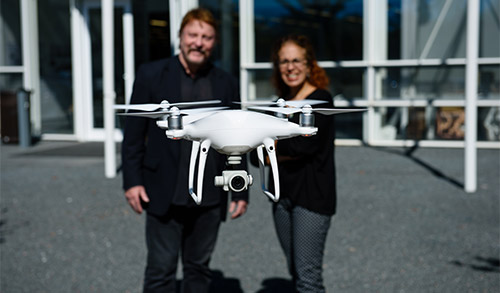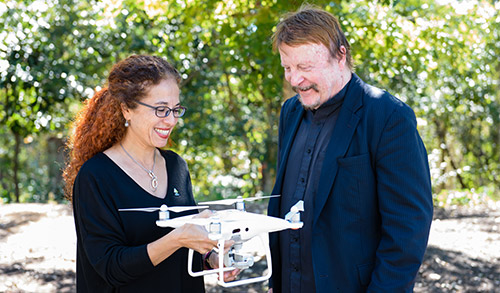

Robert Hewitt and Hala Nassar will work with Duke over the next three years to ensure drone deterrents are unobtrusive and don’t detract from surroundings.

Hala Nassar, a landscape architecture professor in Clemson's College of Architecture, Arts and Humanities, is the university's principal investigator into landscape design that hinders the use of drones. She is being assisted by Robert Hewitt, an associate professor of landscape architecture also from Clemson and the co-principle investigator for the research. Photo Credit: Clemson University

Although Nassar's research focuses on drone deterrent designs, she still acknowledges that drones can be beneficial for a wide range of applications. "Drone technology is increasingly enabling landscape architects to examine natural, environmental, social and physical characteristics of sites," Nassar states. "Recording and mapping complex transformation of site hydrological, topographic and environmental changes has become faster and more accurate to document." Photo Credit: Clemson University

October 13, 2017 | Clemson partners with Duke to develop drone-deterring solutions for public spaces
October 24, 2018 | Developing Drone Deterrent Landscapes